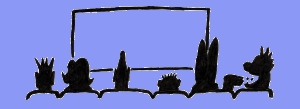Judging AV
|
We often get asked to judge AV Competitions. Recently I was asked if we could
give any advice on the best way to judge. The person asking hadn't done any AV
judging before. He had pointed this out to the club who had asked him but was
told it was not a problem, they would still like him to do it. It was actually
after the event that he e-mailed. He said how he had gone about it and what did
I think. He also said he had trolled the internet for information on how to
judge AV and not found any. He had approached it by making a sheet in Excel with the four disciplines he thought key to sequence making, these each had five sub-headings with the maximum of one point being given for each. This gave him marks out of 20. He had the sequences to look through beforehand but said it had taken him quite a time! He also realised that if judging 'on the hoof' he would struggle to score so many boxes. He had written a very intuitive short critique for each sequence and the club were delighted. The members held their own vote, some had also looked for judging information on the internet and not come up with anything. So how do we do it? I said that a lot of judges, including ourselves, use the ABC system (I also use +/-'s). This quickly separates the top sequences to choose the winners from. We also make notes of anything we think can be improved or, just as important, commended. Most clubs ask for comments on each sequence and we are usually invited to give these on the competition evening. First and foremost we have to remember that some of the entrants may never have made a sequence before, so comments have to reflect this. It can be useful to give a general comment at the start of the evening, it saves repeating yourself throughout the evening and gives the club members a chance to see what you mean. For instance, we might point out that quite a number of the sequences have used different size images, explaining that this doesn't help maintain a smooth flow, one of the keys to a good sequence. So what do I look for? What makes a sequence work and get my A mark? It must hold my interest even if the subject is not one I would normally choose to watch. It will be well crafted, i.e. the author will have taken time to perfect every aspect of it. It will have a pace that suits the mood being created. The 'why I want to communicate this to you' will come across e.g. 'Why I love flowers' or 'I find this interesting/fascinating and want to share it with you' or 'My soul is fed when I am in the mountains - this is how I feel'. A good sequence should not let anything distract the audience. Distractions could be:
My B's are often technically competent, they just lack anything special to lift them above the rest. My A's will consist of good quality sequences that really communicate the idea well. But what I am looking for is 'Magic X'. There is sometimes something about a sequence that will send it immediately to the top of my A list. It's undefinable, you just know it when you see it. It's 'a bit of magic', a sequence that is unforgettable. For example, there are many moments in 'Special' by Howard Bagshaw & Jeff Mansell. One that instantly springs to mind is the child's smile, that is a classic magic moment. 'Who'll look after mam now?' the final line in 'Idwal Bach' by Ron Davies is also one, it is often quoted in AV circles. One of my all time favourite sequences is 'La nuit des docks' a French sequence that was made in slides around 1997, it was full of magic. There was no voice-over, just very powerful music and precision timing. The plot - a man sets up his music stand at night on a track, he then proceeded to 'conduct' the lights of the dock. Does anyone know if it has ever been digitalized? I'd love to see it again. So when I judge, I do so from the heart more than the head, if technical faults distract me, I note them. If they don't, it's because I am so absorbed in watching – after all, it's all about communication. |
July 2011

